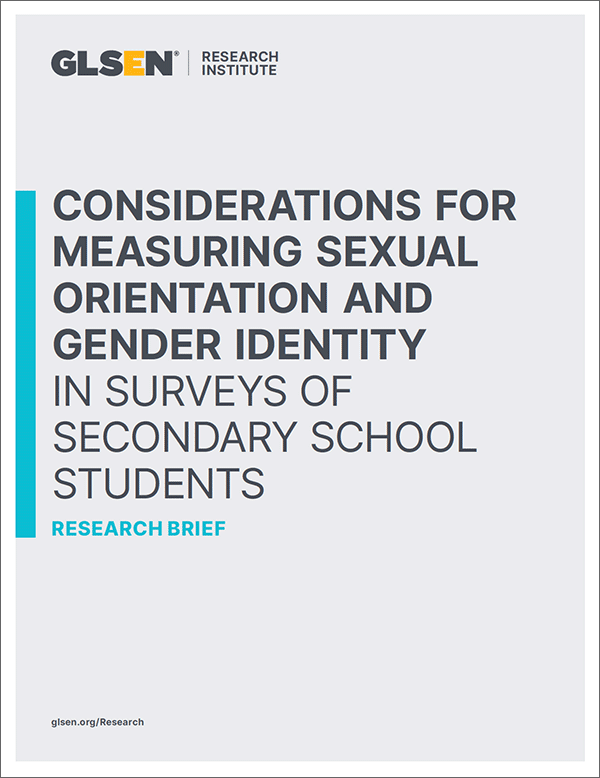
Measuring Sexual Orientation & Gender Identity in Surveys of Adolescents

Over 20 years of GLSEN Research has established that LGBTQ+ youth face hostile school climates in which they experience bullying, harassment, discrimination, and punitive discipline based on their sexual orientation and gender identity, and that these hostile school climates are related to negative educational outcomes. When schools are not safe for LGBTQ+ youth, they are denied equal access to the same education and opportunities that their peers who are not LGBTQ+ experience.
In order to further understand the experiences of LGBTQ+ youth, they must be identified in surveys and data at the federal, state, and local level. Being able to identify LGBTQ+ youth in data, particularly in surveys and data about school climate and negative school experiences, including bullying, harassment, discrimination, and punitive discipline, is critical to improving school experiences and creating school environments that are safe for everyone. When these questions are not included, educators, policymakers, and researchers are unable to address the needs of LGBTQ+ youth.
Although there is no one standard item for measuring sexual orientation or gender identity that is best for all situations and contexts involving youth, there are important considerations when designing surveys that can guide schools, local education agencies, state education agencies, and others toward measures of sexual orientation and gender identity that best meet their needs.
This brief first discusses these considerations regarding sexual orientation and gender identity data collection in survey-based data collection. We discuss survey items that ask individuals to report their own sexual orientation and gender identity. For those interested in administrative data collection in schools and in other educational contexts and for further discussion of LGBTQ+ data inclusion in K-12 schools, see GLSEN's policy brief on inclusive data collection. In the second part of this brief, we provide specific example items (which are referenced throughout the brief) for assessing sexual orientation and gender identity among youth.
Read our related policy brief, LGBTQ+ Data Inclusion: Advancing Intersectional Equity in K-12 Education Systems.
